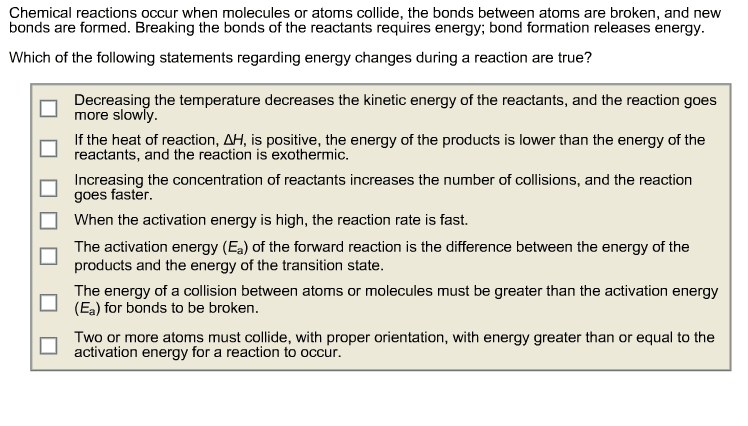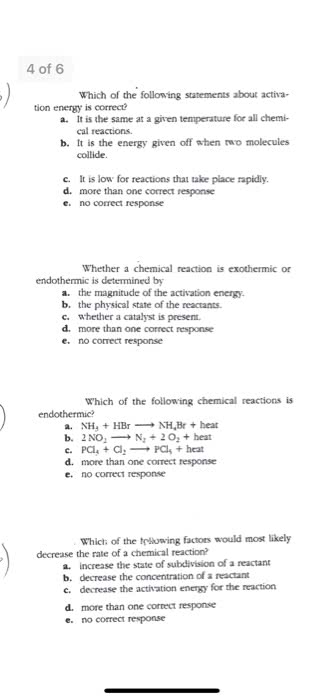CHEM105 Chapter Notes - Chapter 16: Collision Frequency, Reaction Rate

15
CHEM105 Full Course Notes
Verified Note
15 documents
Document Summary
Chemical kinetics: focuses on reaction rate, the change in the concentrations of reactants (or products) as a function of time. In a faster reaction (higher rate), the reactant concentration decreases quickly, whereas in a slower reaction (lower rate), it decreases slowly. Under any given set of conditions, a rate is determined by the nature of the reactants. We can control 4 factors that affect rate: the concentrations of reactants, their physical state, the temperature of the reaction, and the use of a catalyst: concentration: molecules must collide to react. The more molecules present, the more frequently they collide the more often they react. Reaction rate is proportional to the number of collisions, which depends on the concentration of reactants: rate collision frequency concentration: physical state: molecules must mix to collide. When the reactants are in the same phase (e. g. aqueous solution), random thermal motion brings them into contact, but gentle stirring mixes them further.




